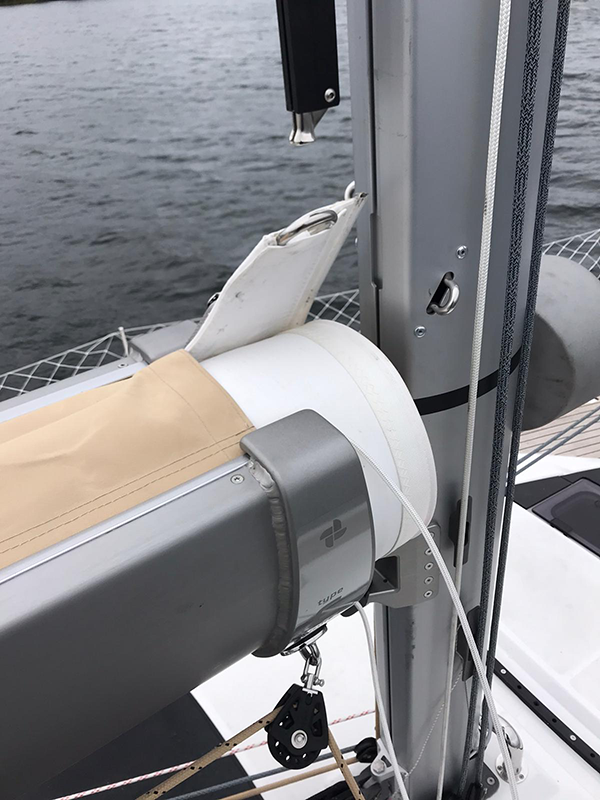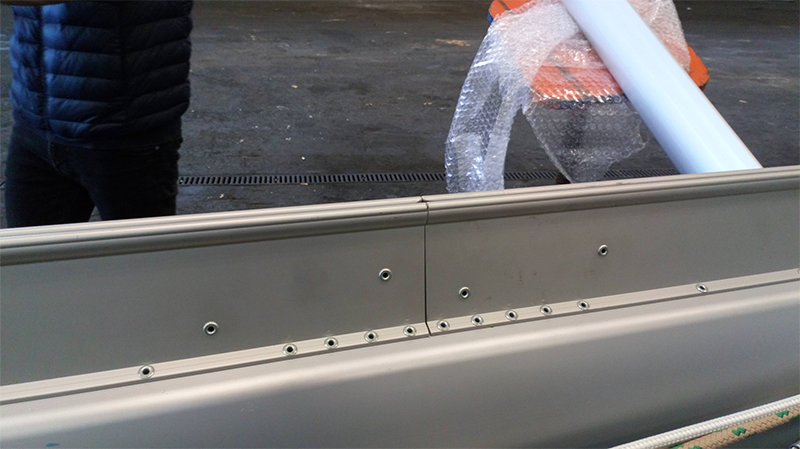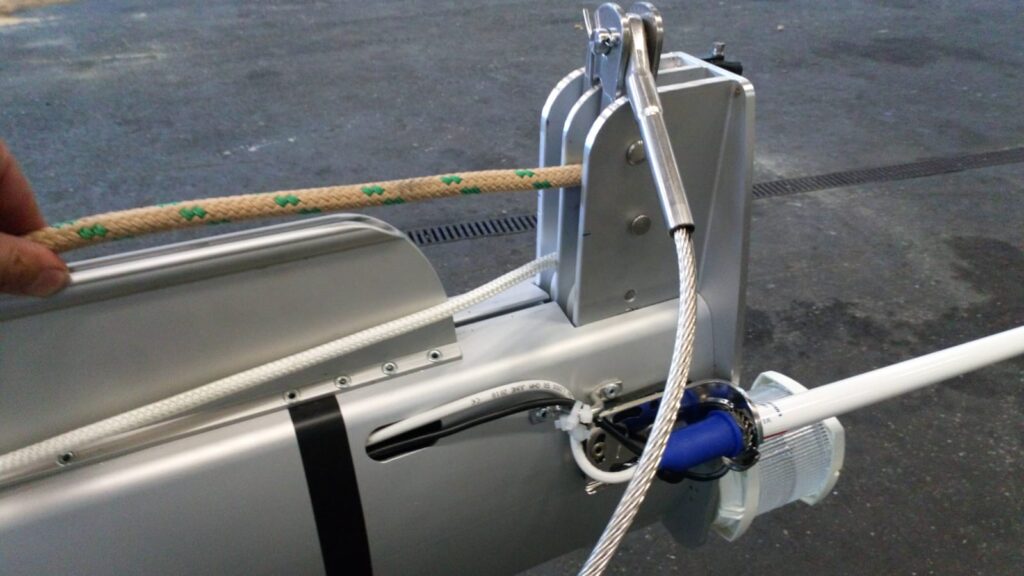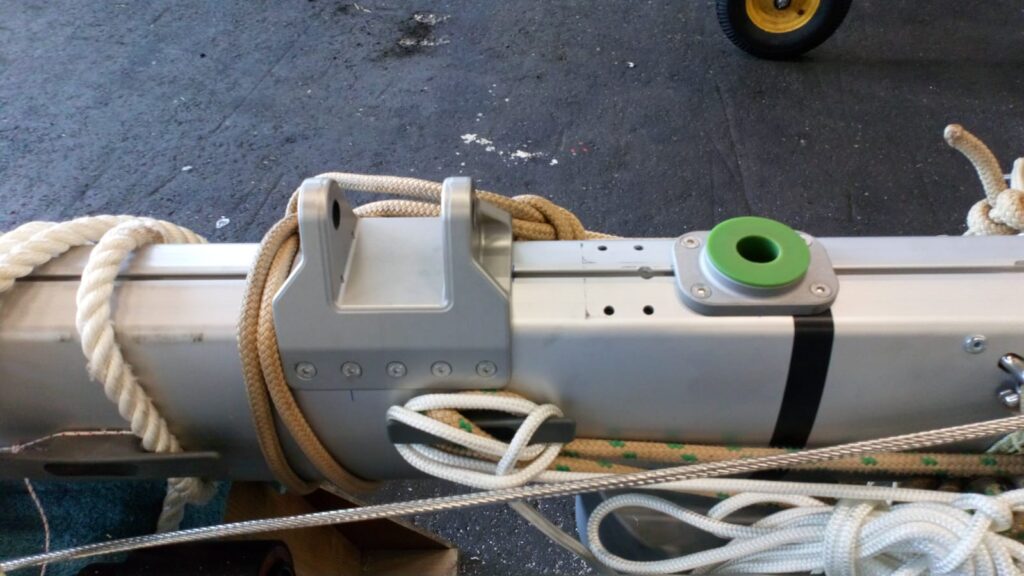Dufour 390 boom
Made Type S furling boom manual driven
The owner of this Dufour 390 decided to install a Made Type S furling boom when the boat was delivered from the Swedish Dufour dealer. It wasn’t a straight forward project however due to the start of the worldwide Covid-19 restrictions. After installation the customer enjoyed his furling boom to the full.
Installation
For this project we focus on the installation of the furling system. For a rigger it is not so difficult to install the Made Type S furling boom, but there are some tricks to make it more straight forward. Most critical part of the installation is drilling the hole for the mast axle. This axle is unique to the Type S. The Type C hasn’t got such an axle and therefore is abit easier to install. As with every job measurements must be done twice before the actual boring is done. All major drilling during this project was performed by an experienced rigger.
Track
Every furling boom system needs a dedicated track. Main purpose of the dedicated track is to bring the track nearer to the luff of the sail. This ensures a much smoother furling. This particular project has been delivered with the raised track which must be revited on the mast. For the riveting Monel rivets are used to eliminate corossion while keeping strenght.
At the bottom end of the track sits a flexible Nylon feeder device. This allows the track to bend towards the direction of the luff. Thus ensuring a smooth glide into the track. As with many masts the masthead of this Z-Spars mast had the halyard sheaves close to the mast profile. We added an extra sheeve to lead the halyard further from the mast profile so it attacks the track as perpendicular as possible.
Boom position
Typically furling booms are installed a bit lower than traditional booms. The reason for this is that furling booms have a taller profile to accommodate the furled sail. This means that the gooseneck is mounted considerably lower than the original gooseneck. As a result it is possible that the boom clashes with the bimini top or sprayhood. Although the angle between the boom and mast needs to be 87 degrees it might be necessary to bring the black band up and doing so decreasing the P size a bit. In this project we managed (just) to keep the black band at the original height meanwhile avoiding the sprayhood. It is important to check how much the mast is tilted backwards especially on newer yachts and multihulls.
Sail
Made provides a sailmaker instruction to ensure a proper furling experience. One of the biggest advantages of a furling boom compared to a furling mast is the possibility to use a fully battened sail. However these battens might be a pitfall for the sailmaker when they don’t follow the instructions. During furling the battens need to be parallel to the mandrel. If not, the sail builds up to way to much and as a result will not fit into the boom body. Also a common fault is an incorrect position of the batten ends. When these are mounted to close to the luff problems start as soon as the luff enters the track.
Configure your boom




